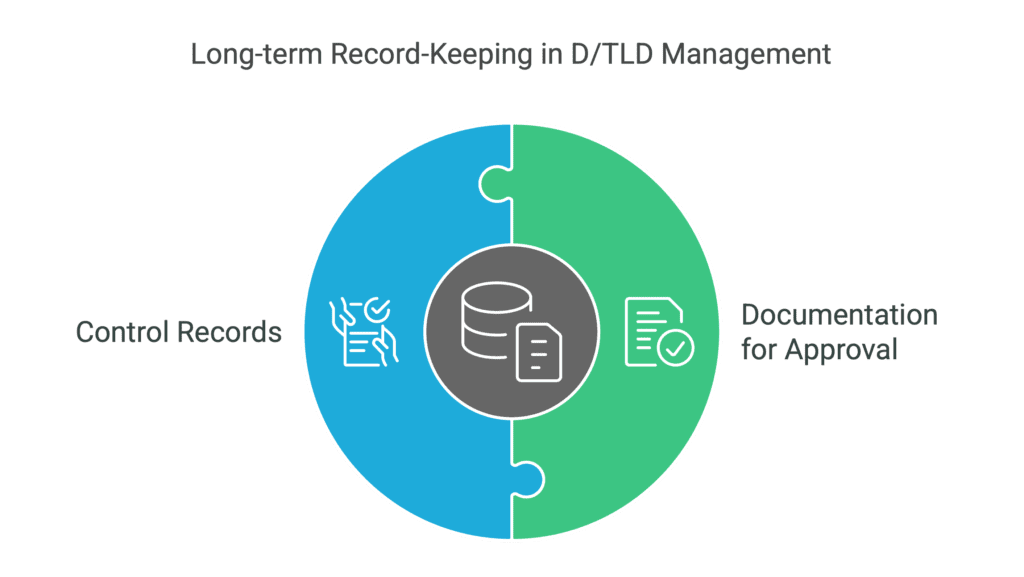At all car manufacturers, laws impose requirements that must be properly met. This applies to all vehicles produced in series, meaning those that move on public roads and have been previously sold to customers.
For this reason, suppliers must maintain appropriate documentation to protect both the supplier and the manufacturer. To adequately meet the rules of manufacturer liability, the VW Group has extended the obligation to maintain documentation beyond the statutory scope to include so-called parts critical to health and life. We identify them as D/TLD.
In addition to the requirements regarding the Quality Management System (QMS), we are obligated to maintain D/TLD documentation for specific parts and proper archiving for at least 15 years.
This includes items labeled as “D” or “TLD”. This category encompasses technical documents such as drawings, production approvals, delivery conditions, inspections, and other quality-related records. If necessary, our client may request documentation.
Documentation also includes personnel qualification procedures, assessment of the suitability of inspection equipment, and control of process capability and record management.
In the event of damage or at the request of the customer, we must be able to document that we fully comply with the obligation to exercise the highest diligence. We do this to exclude the occurrence of defects related to the manufactured product.
D/TLD – Requirements for Supplier Management
To verify the degree of implementation of the relevant requirements, we should conduct an audit to verify the correct management of such characteristics. This also applies to the documentation of audit results. This is done based on the current D/TLD question catalog.
We should conduct this activity every 12 months.
Additionally, we must apply these procedures in a similar manner in the supply chain for received subcomponents and outsourced production processes.
During the audit, we must implement appropriate actions for all identified non-conformities. Their effectiveness is verified based on a re-audit of D/TLD. Of course, we must properly store documentation of audit implementation.
Additionally, managing these characteristics requires us to remember that record-keeping may last up to 30 years. This applies to:
- Documentation prepared for the approval of parts containing D/TLD by the customer
- Control records resulting from the Control Plan

You can find detailed information in the VDA 1 manual and Formel Q Chapter 7.
As we can see, in the face of changes taking place in the automotive industry, proper management of these types of characteristics becomes even more important. This is, of course, related to the enormous pressure to meet legal and product safety requirements.
D/TLD and Customer Specific Requirements
It primarily facilitates suppliers’ understanding of the criteria necessary for meeting the following customer-specific requirements:
- 8.2.3.1.2 Customer-designated special characteristics
- 8.3.3.3 Special Characteristics
- 8.6.2 Layout inspection and functional testing
- 9.2.2.1 Internal audit programme
As we know well, the requirements of car users are constantly increasing, and along with them, the expectations of automotive manufacturers are growing. Among these requirements, product safety will always be one of the top priorities. Therefore, it is extremely important to correctly interpret Customer Specific Requirements (CSR) and implement an appropriate Quality Management System.
We also invite you to the training VW CSR – Formel Q: Customer Specific Requirements management according to IATF.
Dariusz Kowalczyk


